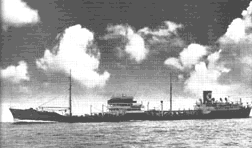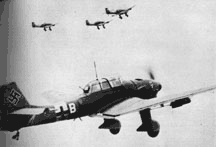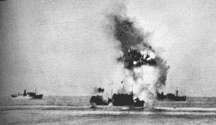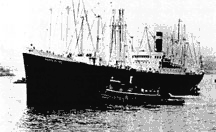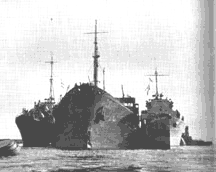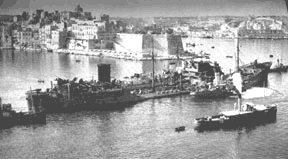Operation Pedestal and SS Ohio save Malta
In mid-1942, the war was going badly for the Allies. During the first six months U-Boats sank 3,250,000 tons of shipping in the Atlantic (an average freighter was 7,000 tons). Rommel rolled through Northern Africa, threatening the Suez Canal, but stopped 35 miles short of Alexandria, Egypt, because of a shortage of supplies. The Nazi war machine reached Stalingrad, with plans to head through the Caucasus for the Middle East oil fields. The Allies had Gibraltar, Malta, and Egypt. The Axis controlled France, Italy, Yugoslavia, Greece, and most of northern Africa. A few countries were neutral (Turkey), or pro-Axis (Spain).
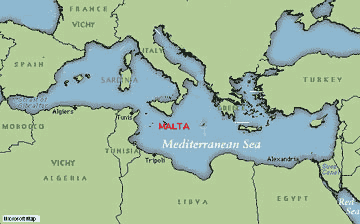
Malta's strategic airfield was key to holding the Mediterranean, but food and oil had to get through past German and Italian bombers. The 250,000 Maltese and 20,000 British defenders were dependent on imported food and oil.
In September of 1941, 8 of 9 merchant ships arrived in Malta bringing 85,000 tons of supplies.
A February 1942 convoy of 3 ships from Alexandria was unsuccessful -- no supplies reached Malta.
A March 1942 convoy of 3 merchant ships plus a Navy oiler, was accompanied by 4 cruisers and 16 destroyers, while another cruiser and its covering force sailed from Malta to meet them. This escort succeeded in keeping an Italian battleship carrying nine 15-inch guns, 3 cruisers and 10 destroyers away from the convoy, but the freighters faced Germans bombers near Malta. One ship was sunk just 20 miles from Malta. The oiler sank within 8 miles of Malta. The remaining two ships arrived to cheers by the Maltese, but were sunk in the harbor with only a fraction of their cargo unloaded.
SS Ohio in peacetime colorsSS Ohio and SS Kentucky
Great Britain had no tankers capable of 16 knots, so President Franklin Delano Roosevelt turned over the SS Kentucky and SS Ohio to Britain for use in supplying Malta.The tanker SS Ohio was launched on April 20, 1940 at Sun Shipbuilding Yard in Chester, Pennsylvania for Texas Oil Company (now Texaco). In anticipation of war and due to unofficial conversations between the American military and the oil company, the Ohio was the largest tanker built at that time. At 9,263 tons, 485 feet long, she and her sister ships, Oklahoma, Kentucky, Colorado, Montana, Georgia, Delaware, Indiana held 170,000 barrels of oil. With 9,000 shaft horsepower Westinghouse turbine engines, they were rated at 16 knots, but in sea trials Ohio made 19 knots.
A June 1942 convoy sent 6 ships including SS Kentucky, escorted part way by a battleship, 2 aircraft carriers and 4 cruisers east from Gibraltar, Simultaneously, 11 merchant ships escorted by 8 cruisers and 40 others headed west from Alexandria. The capital ships withdrew before the narrow channel between Sicily and Africa, leaving the anti-aircraft cruiser HMS Cairo and 13 escorts. The results: 6 merchant ships sunk, 3 damaged, 7 turned back to Alexandria, 2 supply ships arrived in Malta; British Navy - 5 cruisers damaged, 4 destroyers sunk and 1 damaged. No fuel oil got through.
Operation Pedestal in August 1942 was the final effort to supply Malta before she was forced to surrender.
